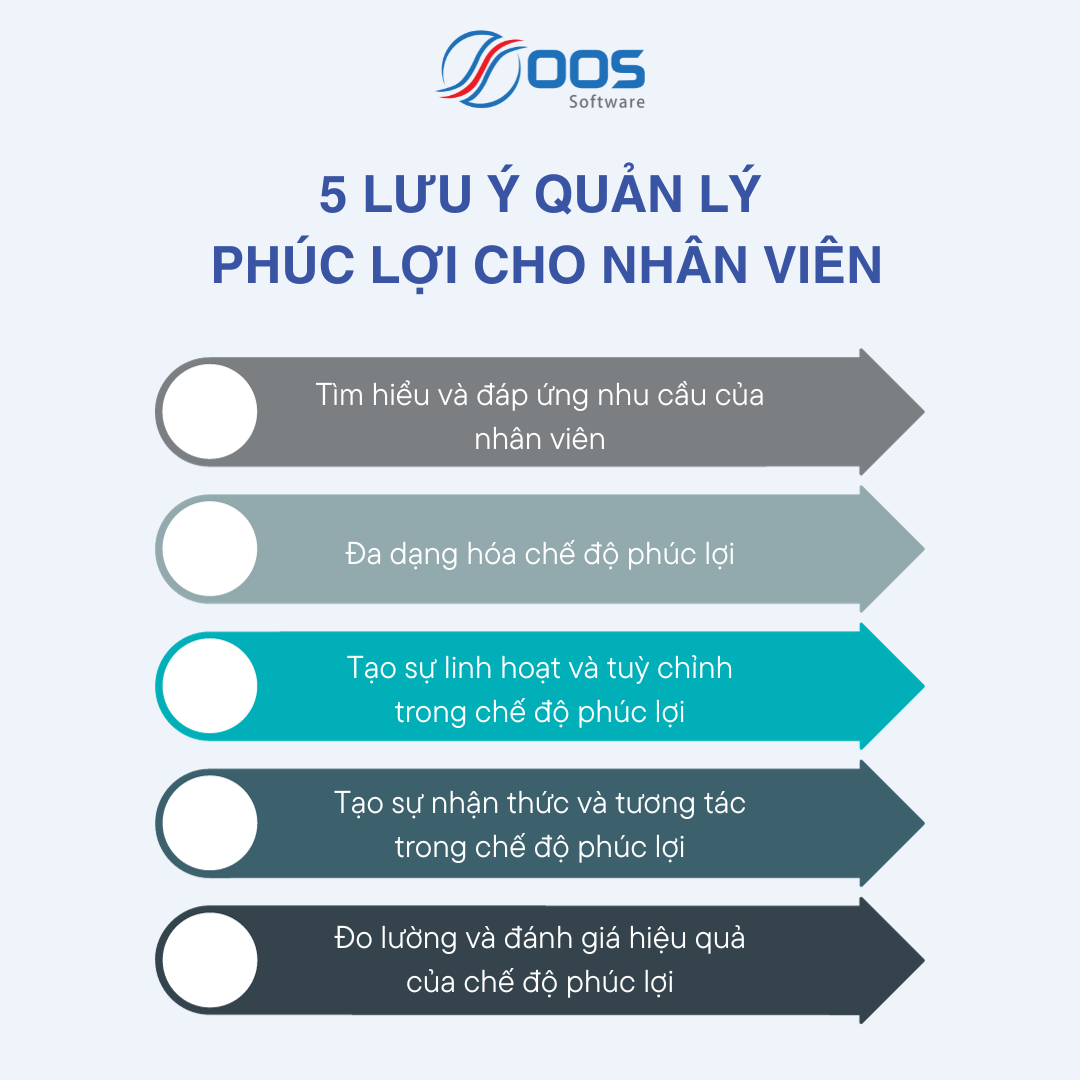Welfare regime for employees are additional perks provided by businesses (employers) to employees. Employee benefits include: Health insurance, vacation days, training, development, retirement, travel, maternity leave (for female employees), etc. They are the deciding factors, the key to retaining talented employees.
Employee benefits has become essential for businesses to be able to compete for talent in difficult economic times, with businesses competing for talent one by one. Join CoffeeHR to learn how to build attractive benefit plans for employees below:
What is employee benefits?
Policies employee benefits not only includes salary and bonus but also includes other benefits. The goal of the welfare regime is to provide the necessary amenities to ensure comfort and convenience for employees, thereby encouraging increased labor productivity. Benefits policies may include insurance, vacation, training and development, travel, maternity leave, and more.
All non-salary benefits related to an employee's job position can be considered employee benefits and they can be divided into two types: mandatory and voluntary, which the business (employer) motion) given.

Why should businesses build a welfare regime for employees?
Build employee welfare regime is one of the strategies to attract and retain potential talent.
According to extensive research by the Society for Human Resource Management (SHRM), 92% employees consider benefits an important element of their work. Nearly a third of employees say job benefits are the top reason for looking for a job and are also an important factor in creating engagement with the business.
Benefits are also one of the important factors that candidates look for in job descriptions – according to the survey, 63% candidates pay attention to the benefits the company offers. This plays an important role in building the employer brand of the business.
Employee benefits also helps management take care of high-performing employees without increasing salary. Make sure all employees receive enough money to cover personal expenses. They can accept lower salaries if they are guaranteed full insurance, have regular health checks, and have a good working environment. flexible work. The practice of employees accepting a partial pay cut to receive benefits is called “salary bundling” and may provide tax or other benefits to both parties.
See more: 4 ways to make employees more excited when receiving salary
Policies and welfare regimes for employees
Compulsory welfare regimes are basic rights of employees that are protected and clearly defined in labor law. Accordingly, businesses must comply with minimum requirements for employee benefits, including:
Insurance: Including health insurance, labor accident and occupational disease insurance, life insurance, and other types of insurance as prescribed.
Sickness allowance: Ensure employees receive benefits when experiencing temporary illness or illness.
Maternity benefits: Includes maternity benefits to support employees during pregnancy and postpartum recovery.
Pension regime: Ensure retirement savings and programs for employees, helping them prepare for old age and retirement.
Compensation for work accidents and occupational diseases: Guarantees compensation and health care fees for employees who have accidents at work or suffer from work-related diseases. These mandatory welfare regimes are an important part of employee rights and must be complied with by law.
In addition, businesses can deploy... voluntary welfare regime depending on the ability and suitability to the needs of the employee. Voluntary welfare regimes are diverse and can be implemented in many different forms, including:
Trips, vacations, and teambuilding activities to create cohesion and relaxation for employees.
Professional skills training program to improve employees' working ability and personal development.
Periodic health checks to monitor employee health status and recommend preventive and health care measures.
Types of benefits such as overtime allowance, holiday allowance, lunch allowance, telephone allowance, travel allowance, housing allowance, and other allowances are intended to provide financial support to employees. members in specific fields.

However, businesses need to consider their budget and find a way to combine benefits to have the most positive impact without exceeding the business's financial capacity. To do this, first make sure you understand the benefits you need to provide according to the law. Make a list and decide if you can expand on some of those benefits. Then, conduct a survey to determine the voluntary benefits your company should offer, while making sure it aligns with your employees' needs and desires.
See more: The remuneration system is consistent with the reality of the enterprise
How much should businesses spend to build employee benefits?
Build employee welfare policy is an important factor to attract and retain talent in a competitive business environment. However, determining a reasonable cost for this policy is still a challenge for many businesses.
According to a report published by the US General Bureau of Labor Statistics in 2019, employee benefits account for about 30% of the total budget of businesses in the US. Employee benefits play an important role in the financial use of a business and ensure that these costs do not have an overly negative impact. However, not all benefits place significant financial pressure on companies. Here are some cost-saving benefits and perks for your business:
Free lunch or snacks: Providing free meals or snacks during working hours will help employees save on daily food costs and increase work comfort.
Working remotely: Implementing a remote work policy can reduce office and travel costs and provide flexibility for employees. This not only saves money but also increases satisfaction and productivity.
Flexible hours: Allowing employees to work flexible hours helps facilitate travel and personal time management. This not only helps reduce financial pressure on employees but also enhances work-life balance.
Travel expenses: Providing travel allowances, such as public transportation or gas subsidies, helps reduce the financial burden on employees traveling to and from work.
By introducing these benefits and perks, businesses can save costs and at the same time satisfy the needs and desires of their employees. However, the most important thing is to ensure that the benefit policy is designed to suit the financial resources of the business and bring long-term value to both the business and its employees.
See more: Total Rewards: Development trends and future of the Human Resources industry
5 Notes on how to effectively manage employee benefits?

Employee benefits management plays an important role in building a positive and productive work environment attracting talent. However, to achieve maximum effectiveness from welfare policies, businesses need to apply appropriate methods and strategies:
Learn and meet employee needs
To manage benefits effectively, businesses need to clearly understand the needs and desires of their employees. Through surveys and close communication, learn about the benefits and welfare policies that employees care about and expect. Meeting these needs will help create satisfaction and engagement with the company.
Diversify welfare regimes
Don't limit your welfare policy to just a few basic benefits. Create a diverse portfolio of benefits such as health insurance, flexible leave, health care, development training, travel benefits, and more. This helps meet a variety of employee needs and makes it attractive to new candidates.
Create flexibility and customization in benefits
Each employee has unique requirements and situations. Create the ability to customize benefits policies, allowing employees to choose benefits that fit their personal situation. For example, allow employees to choose insurance options that suit each individual employee's needs or customize the number of flexible leave days according to each employee's situation and job position.
Create awareness and interaction in the welfare regime
Benefits management is not simply about implementing policies but also about creating awareness and engagement with employees. Organizations should have regular meetings or send information about benefit policies to help employees better understand and use them effectively.
Measure and evaluate the effectiveness of welfare regimes
To ensure the effectiveness of welfare policies, businesses need to establish measurement and evaluation systems. By collecting feedback from employees and tracking metrics such as satisfaction, engagement, and productivity growth, businesses can adjust and improve benefits policies in the best direction.
Manage employee benefits is an important factor in building a positive working environment and attracting talent. By understanding employee needs, diversifying benefits policies, creating flexibility and customization, interacting and measuring effectiveness, businesses can manage benefits effectively and create satisfaction. kindness to employees. This not only improves work productivity but also promotes the sustainable development of the business.
Human resources software can be a powerful tool to enhance employee experience and build a quality working environment through clear benefits. By automating administrative tasks, empowering employees, and providing data-driven insights, HR software can help create a culture of continuous improvement and support growth. and employee development.
CONTACT US
HUMAX has more than 15 years of accompanying many businesses and corporations. Contact us now to optimize Human Resources Management for your Business.
Hotline: 097.306.0459























